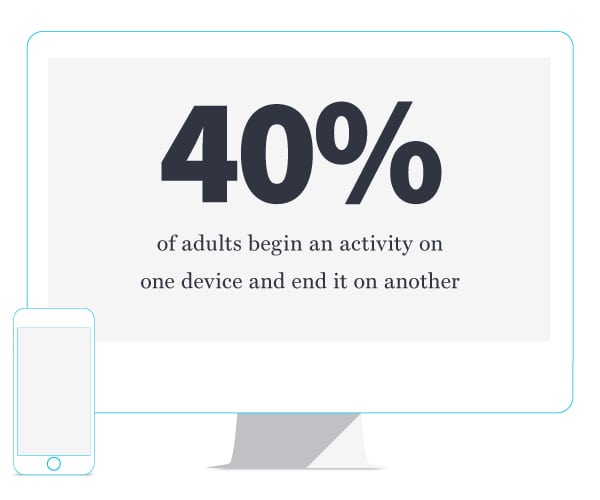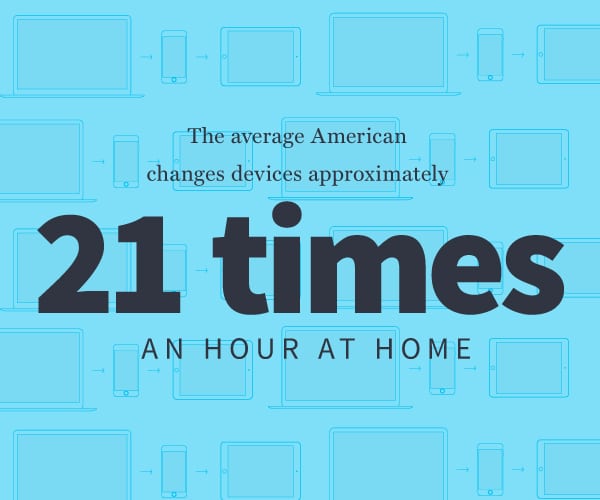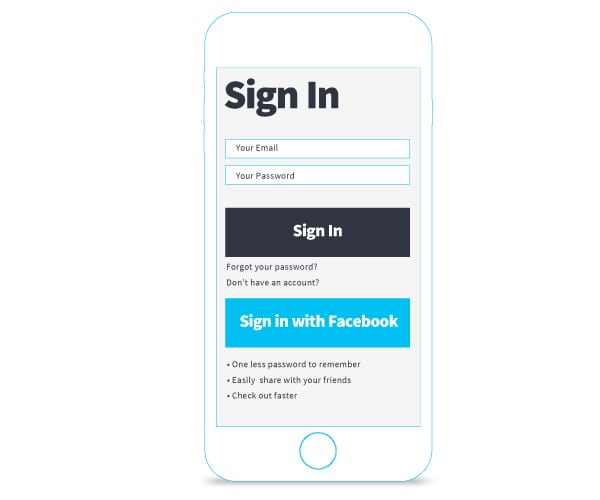Although marketers are getting closer to a completely seamless cross-channel experience for online shoppers, keeping tabs as they bounce between devices through the customer journey can still be difficult.
So when a shopper lands on your site—whether they’re a repeat customer or they found you through organic or paid search—you want to be able to get in front of them as they jump from their smartphone to their laptop and back again. About 40% of adults begin an activity on one device and end it on another.
This comes as no surprise when the average American changes devices approximately 21 times an hour at home. These numbers will only continue to rise as mobile website and app design improves.
Unfortunately, mobile browsers and apps don’t rely on cookies (except Google Chrome’s iOS and Android app), making it more difficult to track and retarget shoppers. This forces brands to find alternative ways to make their mobile advertising dollars work when tracking customers across devices, a number that is set to sharply climb from $42 billion in 2016 to over $65 billion in 2019.
To solve cross-device tracking issues and reach customers, some brands have gone to extremes. Indian fashion retailer Myntra tried gathering data by eliminating their desktop site altogether and forcing shoppers to use their app. While this seemed like a good idea initially, sales dipped 10% in the first week. Most brands won’t take such a risk.
How do you find your customers across multiple devices to deliver the most seamless marketing experience? There are two common approaches marketers take.
Deterministic Approach
When brands ask users to sign in to an app or on their site from each device, they’re using what’s called the Deterministic Approach. This takes the guesswork out of single-user tracking and enabling user behavior to be recorded precisely, no matter how a user views content.
Facebook and Twitter both use the Deterministic Approach. If you shop on your desktop while you’re signed into Facebook, you’ll likely see a retargeted ad on your mobile device or the desktop site. This is not only a win for Facebook and Twitter, but it’s a win for brands advertising on the social networks as well.
Probabilistic Approach
On the other end of the spectrum, the Probabilistic Approach uses information like IP address, geolocation, device type and operating system to make highly-educated guesses about who you are as you bounce between devices.
Widely-used Google ad technologies like AdWords and the Display Network track users with this approach to serve up campaigns across devices.
From an infrastructure standpoint, the Probabilistic Approach is easier to pull off and offers greater scale. However, it can be less accurate. Overall, ad tech companies using the Probabilistic Approach report accuracy anywhere from 60% to 90%.
So, Which is Better?
The approach you choose depends largely on your goals and the trial and error of testing. While Deterministic is more accurate, its requirements might force you to make significant changes to your desktop and mobile sites.
The Probabilistic Approach might give you faster results, depending on your audience’s behavior. Like other marketing approaches, developing and setting goals, testing, and looking at ROI can help you determine which works best.
Conclusion
There are pros and cons to both approaches. With the Deterministic Approach, asking users to log in enables you to provide a totally seamless, personalized experience. But it may not be feasible for your particular brand. Alternative technologies like the Viant Advertising Cloud help brands connect with customers by tracking their devices when they register. So no matter where they go, logged in or not, they can be tracked.
James Van Arsdale III is Director of User Experience for WebLinc


